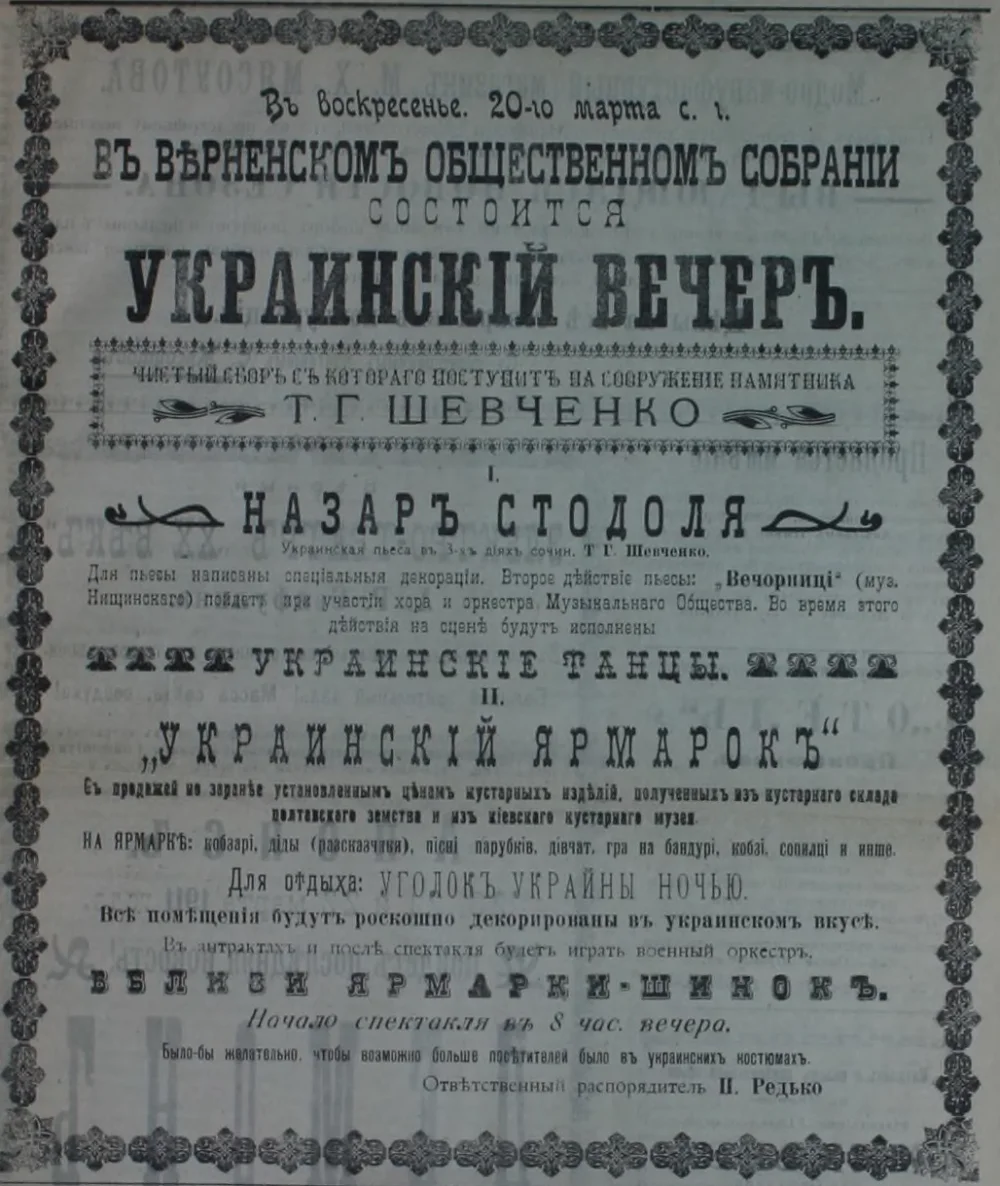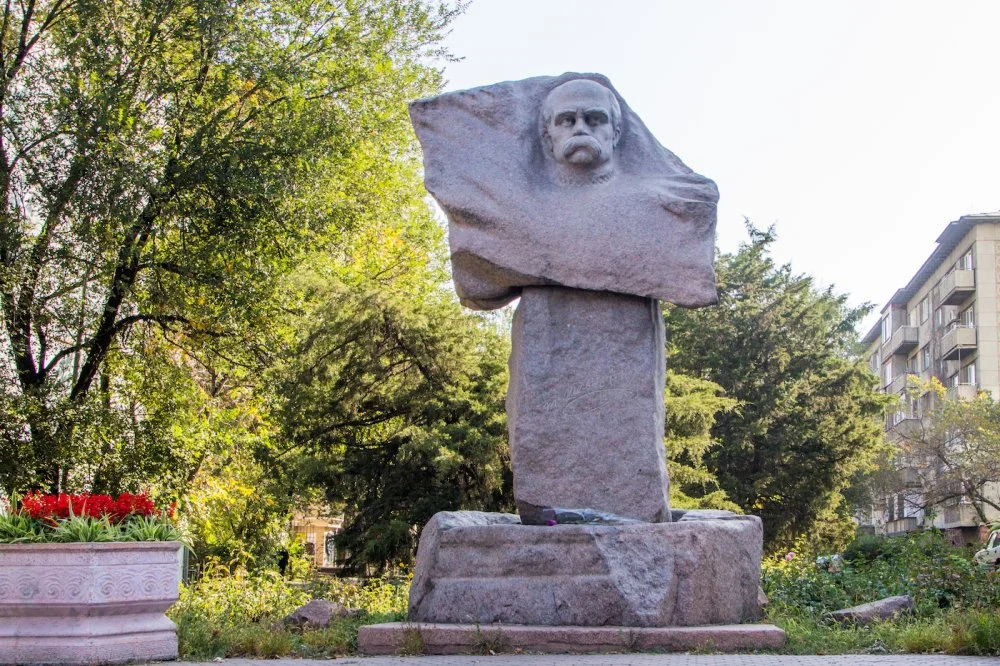As the nineteenth century gave way to the twentieth, a great wave of awakening surged through Kazakh intellectuals, sparking a passionate quest for knowledge. This outpouring of intellectual zeal led to an explosion of new magazines and newspapers being published in Kazakh, heralding the dawn of a new era in sharing culture.
However, what these intellectuals wrote went beyond only spreading knowledge. Soon, a variety of publications emerged, covering topics like business, society, politics, art, and humor. Qalam continues to explore newspapers from this period, offering glimpses into everyday life in Kazakhstan a century ago. Today, we will delve into the Ukrainian community's efforts to erect a monument to one of their great poets.
In the year 2000, a monument to the Ukrainian poet and painter Taras Shevchenko (1814–61) was erected at the intersection of Dostyk and Shevchenko streets in Almaty. The location of the monument to the great Ukrainian kobzari

Semirechesnskie Oblastnye Vedomosti (Semirechye Regional Newspaper)/from open access
NAZAR STODOLYAi
A Ukrainian play by Taras Shevchenko in three acts with choruses. Special sets and decorations have been created for the play. The second act of the play, ‘Vechornytsi’ (music by Nyshchynsky), will be performed with the participation of the choir and orchestra of the musical society. During this act, Ukrainian dances will be performed on stage.
II.
UKRAINIAN FAIR
Featuring the sale of handicrafts at fixed prices, sourced from the handicraft warehouses of the Poltava Zemstvo and the Kyiv Handicraft Museum.
At the Fair: Kobzars, children storytellers, songs of young men and women, playing on the bandura, kobza, sopilka, and vippa.
For Relaxation: A corner of Ukraine at night.
All premises will be lavishly decorated in Ukrainian style. During the intermission and after the performance, a military orchestra will play. There is a tavern near the fair.
The performance starts at 8 p.m.
It would be desirable for as many visitors as possible to be dressed in Ukrainian costumes.
Chief organizer: I. Redko
In the end, the monument was not erected at that time; however, the organization of the Ukrainian evening caused quite a stir among the local public. In a ‘burning feuilleton’ published in issue № 58, a local resident sarcastically commented on the Ukrainian language and the evening's attendees, claiming that they were not Ukrainians at all but migrants from Bessarabia and Tambov. Another author, however, admired the authenticity of the decorations and the quality of the production, while complaining about the stuffiness, crowding, and dirt at the entrance of the public assembly building. It was also claimed that due to the event, the incidence of flu increased as was reported in issue № 62.

Monument to Taras Shevchenko in Almaty/Shutterstock
The Semirechenskie Oblastnye Vedomosti was launched in 1870 in Almaty. The publication frequently covered world and national news, local events, crime reports, and advertisements, being printed in both Russian and Kazakh.




